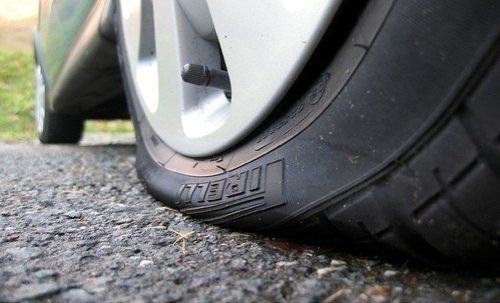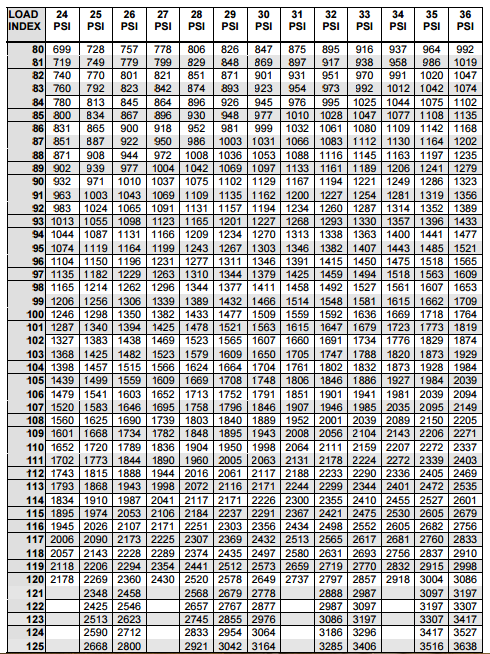Fancy Bigger Wheels For Your Ride? Read All About Correct Tire Pressure Here
Many of us enthusiasts love to up size wheels and tires to give our rides that sporty look and of course when done right it also improves traction. This article is about finding the correct tire air pressure for your upsized tires.
Now that you have upsized your vehicle tires from stock, lets say 195/65-R15 size since it is the OEM tire size provided by General Tyres to our local auto manufacturers, to something like 17 inch wheels and tires. What tire pressure will you use?
Please keep in mind the vehicle manufacturer recommended tire pressure (mostly printed on a driver side panel sticker) is according to weight distribution of your vehicle and applies only to stock tire size that has a certain load index. Will you continue to inflate your bigger tires to 32 psi front and 30 psi rear which is mentioned for stock size by many vehicle manufacturer?
Wrong! The 17 inch tires probably have higher load index than vehicle’s stock size. For optimum traction, longevity of suspension components and to reduce harsh drive, one needs to determine correct tire pressure for your bigger tires.
The answer is you will need to consider the stock tires load index and manufacturer recommended tire pressure to arrive at load on the tire. Next use your upsized tire load index to match with the required load and arrive at the correct air pressure for your upsized tires.
Here’s an example how it works.
Suppose stock vehicle tire size is 195/65-R15 and load index mentioned on stock tire is 91 and marking on driver’s side panel of your car shows 32 psi front and 30 psi rear tires. With this data which is provided by manufacturer find load index 91 row in table below, under tire pressure 32, the load on front tire comes to 1,227 lbs (or 556.56 kilograms).
Front Tire Load – 1,227 lbs (556.56 kilograms)
Rear Tire Load – 1,162 lbs (527.07 kilograms)
RELATED: There Is A Limit To The Load Tyres Can Carry, And You Should Know It
Suppose you upsize to 17 inch low profile tires and select 205/50-R17 tires and wheels. This size translates into roughly the same diameter as stock (0. 4% increase) but the new upsized tires have Load Index 93 mentioned on tire side wall. Now look again in table below in Load Index Column to reach 93 row and find 1,227 lbs (556.56 kilograms) to set front tire pressure and something close to 1,162 lbs (527.07 kilograms) to set rear tire pressure.
Front Tire pressure comes to 30 psi for exact load of 1,227 lbs on each of front tires.
Rear Tire pressure comes to 28 psi to carry load of 1,165 lbs on each rear tires.
Below is a table that shows relation between tire Load Index, tire pressure and load.
One can use the above example and data in table to arrive at correct tire pressure for your larger tires.
To sum it up, load carrying capability of a tire is a relation between tire load index and air pressure which increases or decreases with every psi. When upsizing one must use correct tire pressure to achieve good traction from your new tires. While too much air pressure will mean extremely harsh ride and loss of traction, under inflation reduces the life of tires.



Thank you. Very informative.
INFORMATIVE
nyc article…..also tell them about speedometer errors caused by such tyres……the company who designed that car knows better which tyres are suitable….if there is much need of such tyres then buy massey furguson mf240 tractor….dont play with suspension and safety
which companies designed tyres according to cars in pakistan.plz mention . if they were even testing the cars then there was no euro star in any car
i am talking about tire size not tire brands……if u by chance read service manual then it states tire size not tire brand……so tire size is designated by company not tire brand!…..regarding brand it is monopoly of big 3’s….i cannot comment on it…….and i personally experience general tires are not so bad compared to their price except XP2000…..considering they are fresh, general ones are economic……..but i have experienced 5000km driven dunlop eco tyre burst on road…..so general tires are noisy but bear heat of summer perfectly……..it is our national habit to underestimate pakistani items like Guard,SNA,Loads,SANPAK etc 🙂
Any chance this chart goes bigger, or has an update.. 36 pis is short of my cars pressure.
how true is this? i have Toyota Yaris 2016 with stock 175/65R14 then manual says 33psi front and 30 psi rear. I changed to 196/60R15 tires with alloy rims.
If i used the table you provided i would be having 27psi front and 25 psi rear. I think it is way too low… Correct me if i am wrong… Now i just set my pressure at 31 front and 28 rear… It is even very comfy for me… I tried the factory setting and it is a bumpy ride, so no way with the factory default pressure…